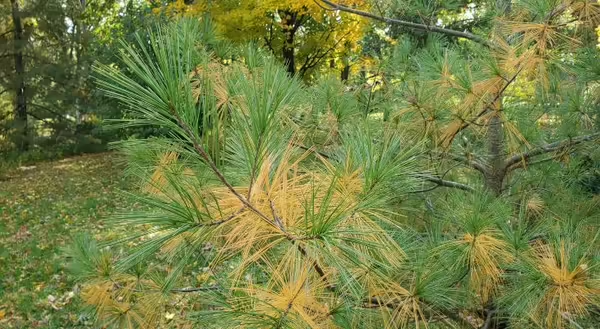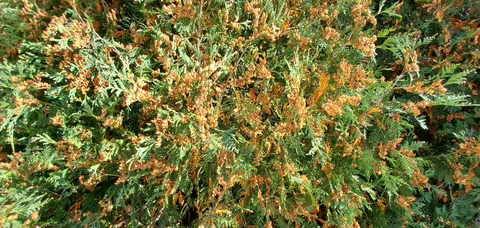
The beauty of fall is upon us with splashes of exorbitant color all around the landscape. In the past week, red maples (Acer rubrum) have nearly reached their peak color for the season, displaying fire-red leaves that scream for attention. The brilliant yellows of shagbark (Carya ovata) and pignut hickory (Carya glabra) have been turned on like a switch to produce golden clouds of canopy and an equally stunning understory color in area woodlands.
But don’t be overcome by these deciduous icons of our forests and landscapes because their fiery color now will only fade to bare twigs in few short weeks. Sure, shagbark hickory has spectacular peeling bark for winter appeal and red maple’s neatly structured branching provides order and balance to the winter landscape, but lets face it, their peak seasonal interest has come and gone by winter.
Conifers have ornamental appeal both winter and fall
However, winter is the time of year that conifers really show their stuff. Only a tiny handful, such as bald cypress (Taxodium distichum), larch (Larix spp.) and ginkgo (Ginkgo biloba) shed their foliage, making the evergreen conifers the absolute stars of winter. Most conifers retain the green of the growing season and preserve it for the long winter season, taking center stage in the otherwise leaf-less landscape.
While its easy to see their winter value, don’t miss the fall display that many of the conifers offer every year only to be drowned out in the sea of autumn color. Just as is the case for their deciduous cousins, some species have lackluster fall color, but many offer brilliant orange or yellow color in fall which often contrasts nicely with the remaining green foliage to create unique color combinations on a single plant.
All needles fall at some point
Although we often think of needles as perennial since evergreens retain foliage year round, all evergreen foliage falls at some point. Most needles make it for 2-3 seasons and then drop in the fall.
Since woody plants grow from the branch tips, the youngest foliage is out near the ends of branches and older foliage is further back on limbs, toward the trunk. Thus, coniferous fall color appears on the inner portion of the canopy while the tips stay green. This creates a wonderful contrast between live needles and those displaying fall color, giving depth to the colorful palette of foliage.
White pine (Pinus strobus)
White pine is one of my favorite species to watch for fall color. Inner needles turn a brilliant yellow, much like the hickories, while the outer needles are still a nice medium green. Since the fine-textured needles are in bundles of 5 and a bit longer than other species, the inner fall colors tend to really stand out as clusters of the 3-6inch long needles light up with yellow. White pine also tends to densely pack needle bundles into the branch tips. So, although it is the inner needles that change color, they are relatively close to the branch tips anyway, standing out behind the green new growth.
Arborvitae (Thuja spp.)
Arborvitaes are another favorite of mine with respect to their fall colors. Anyone that has ever tried to pick out an arborvitae at the nursery quickly learns there are tons of cultivars and hybrids availability in all shapes and sizes. So, there is literally an arborvitae out there for any landscape situation.
In contrast to white pine’s fine textured foliage, arborvitaes have a more coarse-textured foliar display, with scale-like needles arranged in flattened sprays. These overlapping and intertwined sprays of foliage create a dense wall of evergreen needles, making this group of plants ideal for visual screening, wind breaks and other foundational elements in the landscape. The intricate pattern of green, younger foliage at the tips is starkly contrasted by bright orange fall color on inner limbs. This two-toned effect is amazing for several weeks in the fall season and sometimes can be enhanced by tiny clusters of orange to brown cones that also mature this time of year.
On the negative side, I’ve observed varying degrees of fall color on arborvitae among cultivars and even individual plants, making it difficult to select any particular plant with assurance of good fall color. However, if you are a lucky recipient of an arborvitae with good fall color, be sure not to miss it this year among all the other fantastic colors of fall.
